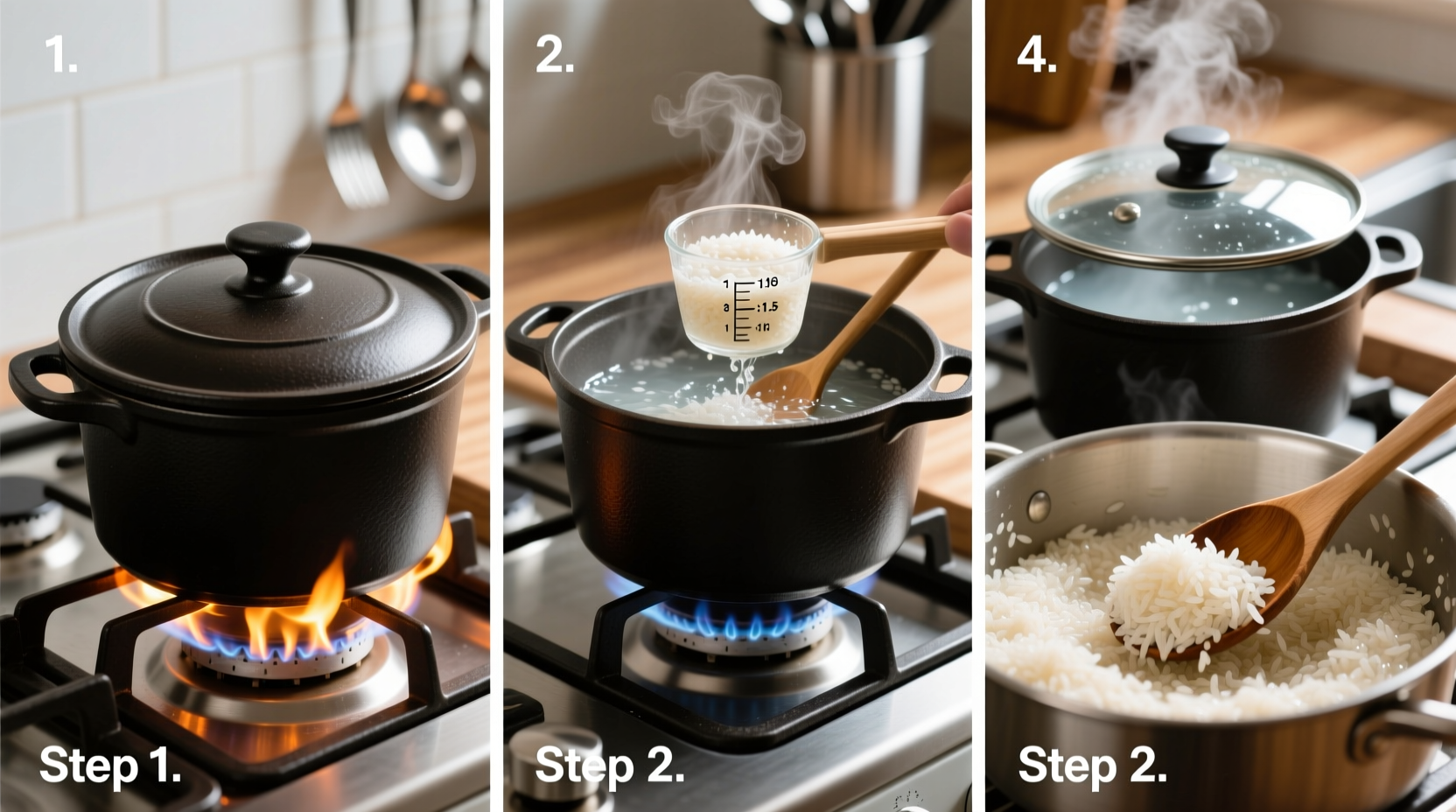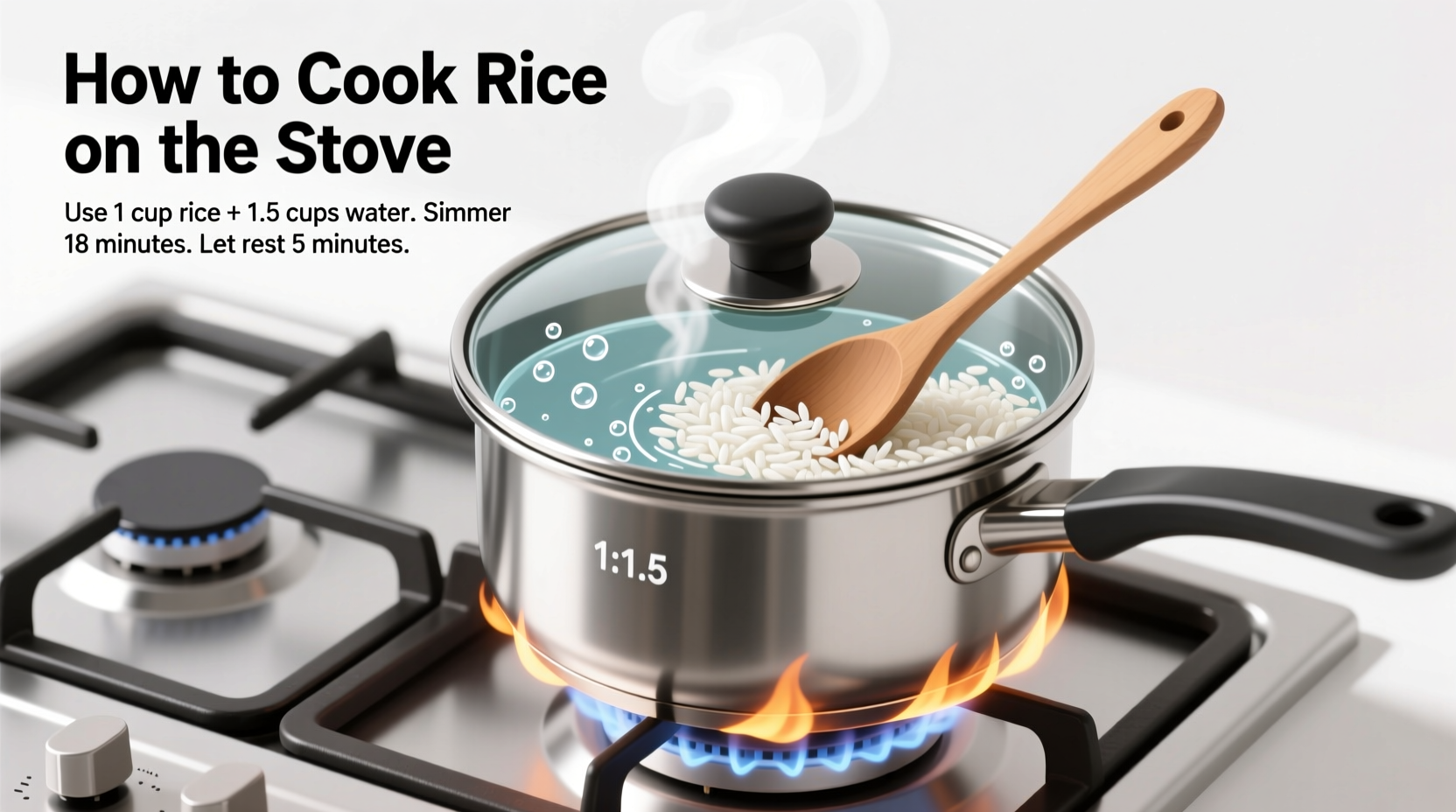Why This Foolproof Method Works
Forget gummy or burnt rice forever. This technique leverages precise water ratios and controlled heat to create fluffy, restaurant-quality rice with basic equipment. Professional chefs like those at the University of California Davis Rice Research program confirm that rinsing and resting are non-negotiable for ideal texture. You'll achieve consistent results whether cooking jasmine, basmati, or standard long-grain rice.
Your Essential Rice Toolkit
- Heavy-bottomed pot with tight-fitting lid (prevents steam escape)
- Measuring cups (not spoons - volume accuracy matters)
- Fine-mesh strainer (for thorough rinsing)
- Fork (never a spoon - prevents crushing grains)
Step-by-Step Cooking Process
1. Prep: Rinse and Measure
Rinse rice under cold water in your strainer until runoff becomes clear (30-60 seconds). This removes surface starch that causes stickiness. Use exact water ratios based on rice type:
| Rice Type | Water Ratio | Simmer Time |
|---|---|---|
| White rice | 1.5 cups : 1 cup rice | 15-20 min |
| Brown rice | 2.25 cups : 1 cup rice | 40-45 min |
| Basmati/Jasmine | 1.75 cups : 1 cup rice | 12-15 min |
Source: University of California Davis Rice Research guidelines
2. Cook: Boil, Simmer, Rest
- Combine rinsed rice, measured water, and ½ tsp salt in pot
- Bring to rapid boil uncovered over medium-high heat
- Immediately reduce heat to lowest setting, cover tightly
- Simmer 15-20 minutes (no peeking!)
- Turn off heat and let stand covered for 10 minutes
- Fluff gently with fork before serving

3. Troubleshooting Common Issues
Too wet? Return to low heat uncovered for 3-5 minutes. Too dry? Sprinkle 1-2 tbsp water over rice, cover, and steam 5 more minutes. Burnt bottom? Next time use lower heat and ensure proper water ratio. Remember: altitude affects boiling points - above 3,000 feet, increase water by 2-4 tbsp per cup as noted by USDA Agricultural Research Service.
Safety and Storage Tips
Cool cooked rice within 1 hour to prevent bacterial growth. Store leftovers in airtight containers for up to 5 days per USDA Food Safety guidelines. Reheat with 1 tsp water per cup to restore moisture.
Frequently Asked Questions
Can I skip rinsing the rice?
Rinsing is essential for non-sticky results. Unrinsed rice contains surface starch that creates a gummy texture. The exception is sushi rice where stickiness is desired.
Why must I let rice rest after cooking?
The 10-minute rest allows residual steam to complete cooking evenly. Skipping this causes uneven texture and mushy grains. This step is validated by culinary science research at major cooking institutions.
How do I prevent rice from boiling over?
Use a larger pot (at least 3x rice volume), maintain true simmer (not boil), and ensure tight lid seal. A wooden spoon laid across the pot top also breaks bubbles effectively.
Can I add flavor while cooking?
Yes! Substitute broth for water, or add herbs/spices to the cooking water. Avoid acidic ingredients like tomatoes during cooking as they prevent proper grain expansion.











 浙公网安备
33010002000092号
浙公网安备
33010002000092号 浙B2-20120091-4
浙B2-20120091-4